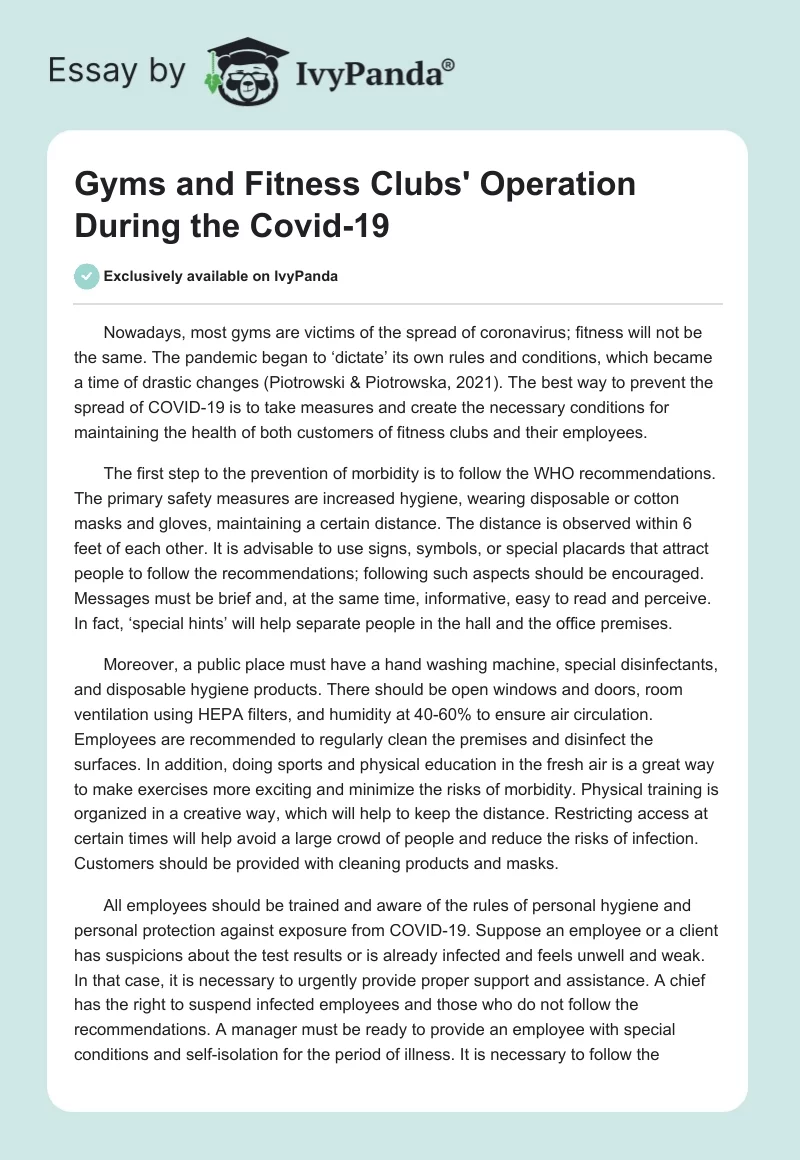Nowadays, most gyms are victims of the spread of coronavirus; fitness will not be the same. The pandemic began to ‘dictate’ its own rules and conditions, which became a time of drastic changes (Piotrowski & Piotrowska, 2021). The best way to prevent the spread of COVID-19 is to take measures and create the necessary conditions for maintaining the health of both customers of fitness clubs and their employees.
The first step to the prevention of morbidity is to follow the WHO recommendations. The primary safety measures are increased hygiene, wearing disposable or cotton masks and gloves, maintaining a certain distance. The distance is observed within 6 feet of each other. It is advisable to use signs, symbols, or special placards that attract people to follow the recommendations; following such aspects should be encouraged. Messages must be brief and, at the same time, informative, easy to read and perceive. In fact, ‘special hints’ will help separate people in the hall and the office premises.
Moreover, a public place must have a hand washing machine, special disinfectants, and disposable hygiene products. There should be open windows and doors, room ventilation using HEPA filters, and humidity at 40-60% to ensure air circulation. Employees are recommended to regularly clean the premises and disinfect the surfaces. In addition, doing sports and physical education in the fresh air is a great way to make exercises more exciting and minimize the risks of morbidity. Physical training is organized in a creative way, which will help to keep the distance. Restricting access at certain times will help avoid a large crowd of people and reduce the risks of infection. Customers should be provided with cleaning products and masks.
All employees should be trained and aware of the rules of personal hygiene and personal protection against exposure from COVID-19. Suppose an employee or a client has suspicions about the test results or is already infected and feels unwell and weak. In that case, it is necessary to urgently provide proper support and assistance. A chief has the right to suspend infected employees and those who do not follow the recommendations. A manager must be ready to provide an employee with special conditions and self-isolation for the period of illness. It is necessary to follow the screening protocol to identify these people – for example, to measure the temperature at the entrance, involve the personnel department, follow the recommendations of the specific state and federal authorities.
References
Piotrowski, D., & Piotrowska, A. I. (2021). Operation of gyms and fitness clubs during the COVID-19 pandemic–financial, legal, and organisational conditions. Journal of Physical Education and Sport, 21(2), 1029-1036.


